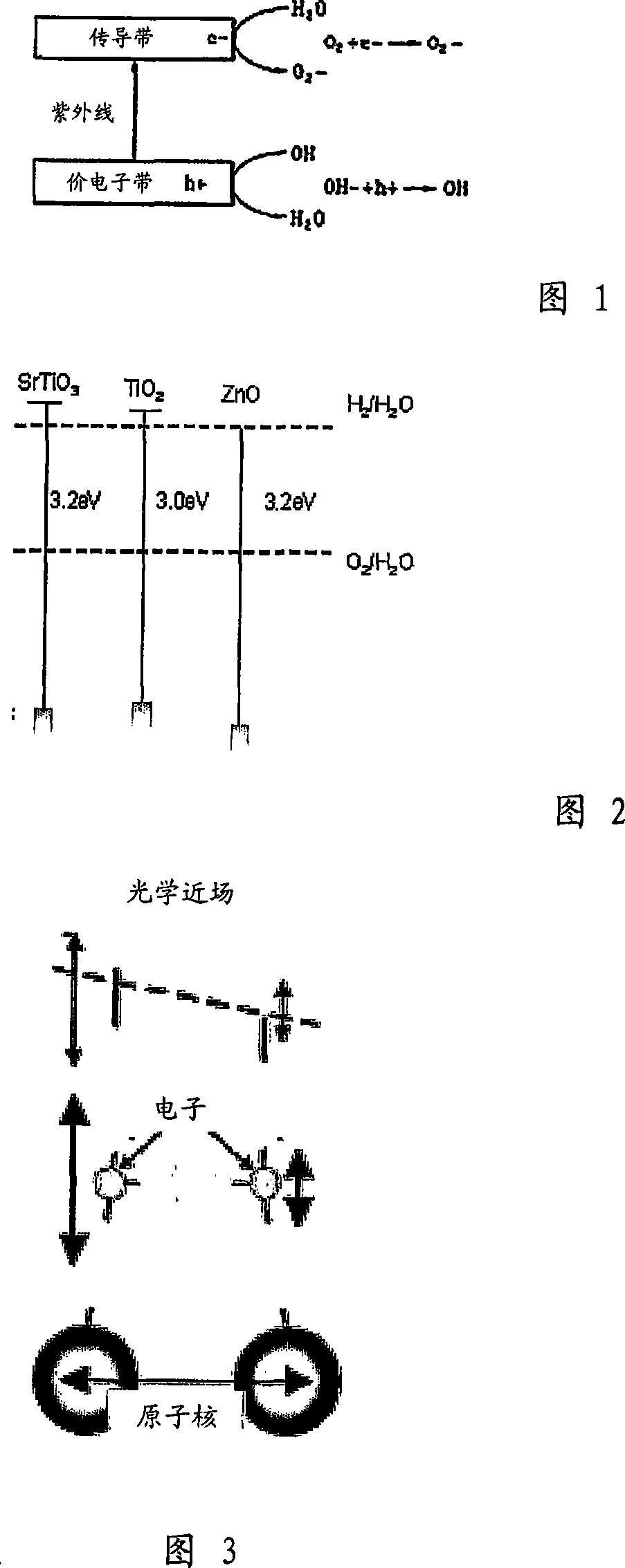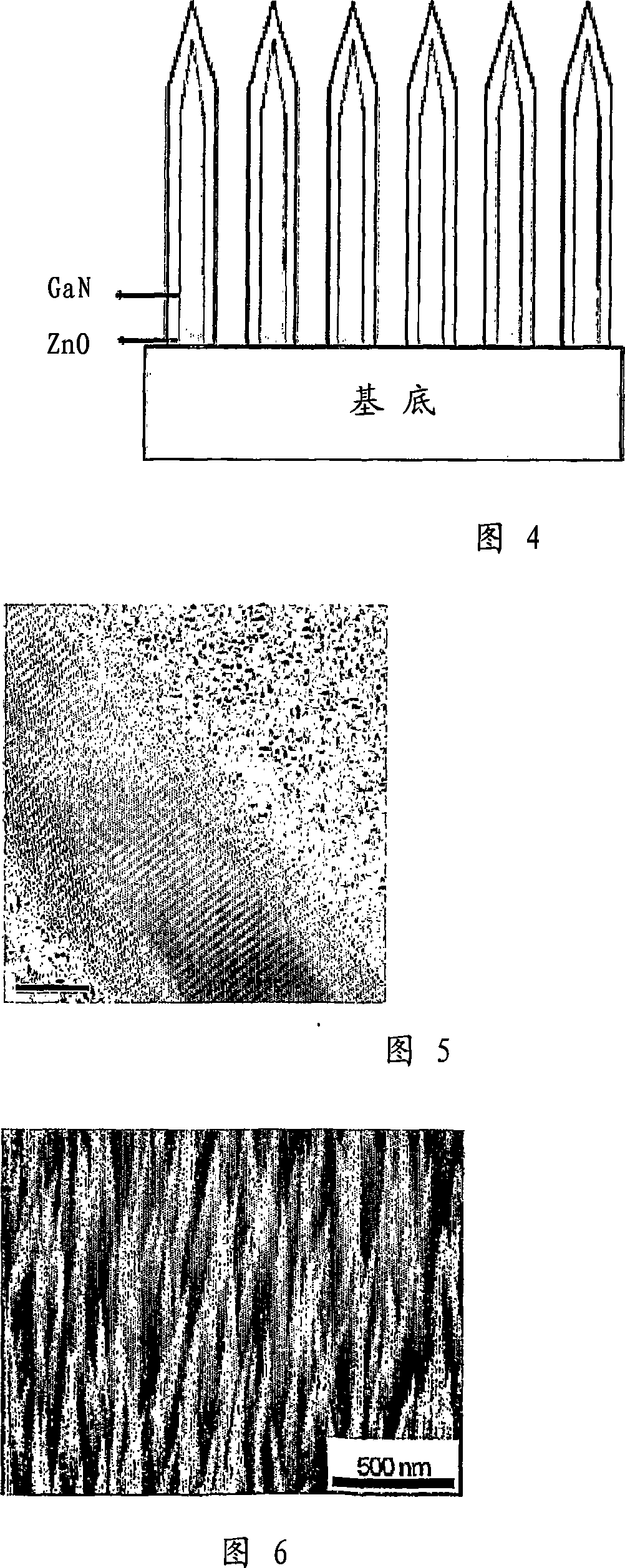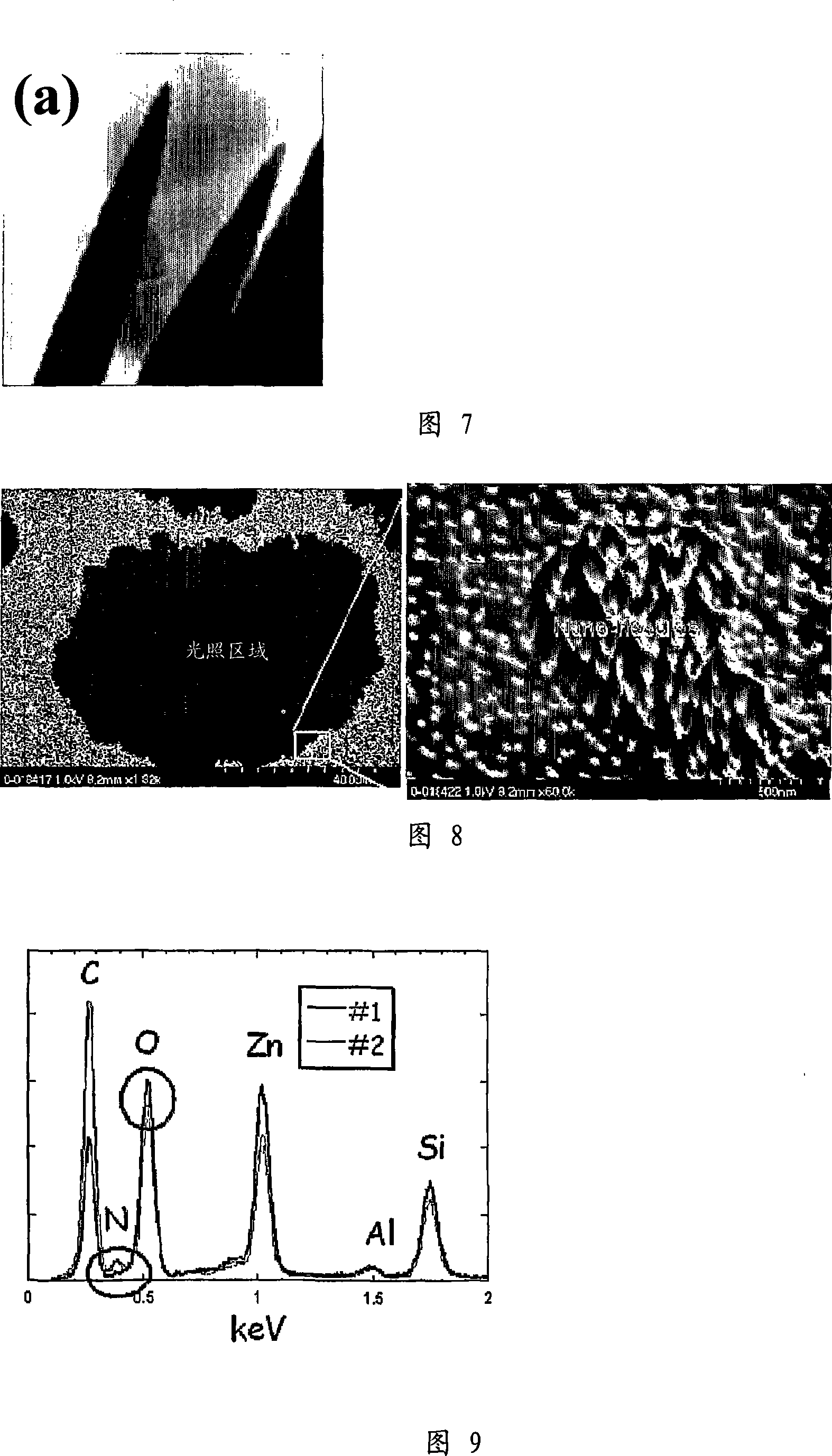Near-field photocatalyst containing zinc bloom nanometer line
A photocatalyst and near-field light technology, which is applied in physical/chemical process catalysts, metal/metal oxide/metal hydroxide catalysts, nanotechnology, etc., can solve problems such as increased production costs, complex devices and processes, and achieve The effect of simplifying production steps and reducing costs
- Summary
- Abstract
- Description
- Claims
- Application Information
AI Technical Summary
Problems solved by technology
Method used
Image
Examples
example 1
[0054] Example 1: Fabrication of photocatalysts containing ZnO nanoneedles (MOCVD)
[0055] The glass substrate was placed in a metal organic chemical vapor deposition (MOCVD) reactor, dimethyl zinc (Zn(CH 3 ) 2 ) and O 2 The gas was fed into the reactor through the respective lines at rates of 0.1-10 sccm and 10-100 sccm, respectively. Along with the above gases, there is also argon (Ar) used as a carrier gas.
[0056] Dimethyl zinc and oxygen were chemically reacted on the glass substrate while maintaining a pressure of 0.2 Torr and a temperature of 500°C in the reactor for one hour to grow and deposit ZnO nanoneedles thereon.
[0057] The ZnO nanoneedles oriented perpendicular to the shape of the substrate on the resulting glass substrate are shown in Figure 6. Each nanoneedle has a diameter of 60 nm, a length of 1D, and a density of 1010 / cm 2 .
example 2
[0058] Example 2: Fabrication of photocatalysts containing ZnO nanoneedles (MOVPE)
[0059] After placing the substrate in the reactor, dimethylzinc (Zn(CH 3 ) 2 ) and O 2 The gas sources are fed through the respective routes at rates of 0.1-10 sccm and 10-100 sccm, respectively, while the substrate temperature is maintained at 400-500°C. In connection with this, argon (Ar) is used as a carrier gas.
[0060] Dimethyl zinc and oxygen were chemically reacted on the glass substrate while maintaining a pressure of 0.2 Torr and a temperature of 500°C in the reactor for one hour to grow and deposit ZnO nanoneedles thereon. As shown in FIG. 7 , nanoneedles with sharp ends perpendicular to the substrate were formed on the substrate.
[0061] Evaluation Example 1
[0062] The ZnO nanoneedles generated in Example 1 and Example 2 were immersed in ultrapure distilled water, and then exposed to He-Cd laser light with a wavelength of 325 nm for 30 seconds. Thereby obtaining superhydro...
PUM
| Property | Measurement | Unit |
|---|---|---|
| diameter | aaaaa | aaaaa |
| diameter | aaaaa | aaaaa |
Abstract
Description
Claims
Application Information
 Login to View More
Login to View More - R&D
- Intellectual Property
- Life Sciences
- Materials
- Tech Scout
- Unparalleled Data Quality
- Higher Quality Content
- 60% Fewer Hallucinations
Browse by: Latest US Patents, China's latest patents, Technical Efficacy Thesaurus, Application Domain, Technology Topic, Popular Technical Reports.
© 2025 PatSnap. All rights reserved.Legal|Privacy policy|Modern Slavery Act Transparency Statement|Sitemap|About US| Contact US: help@patsnap.com



